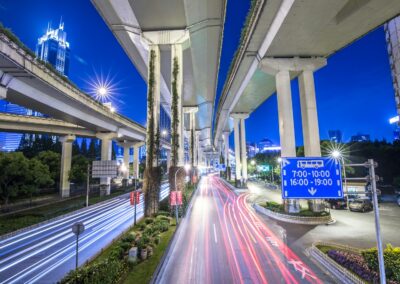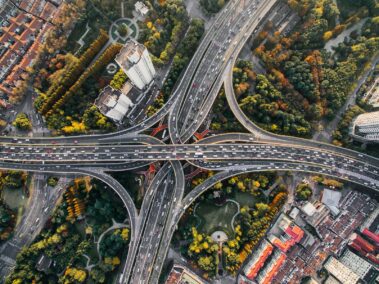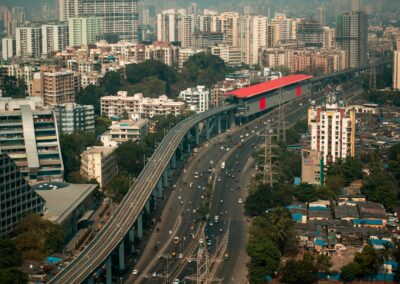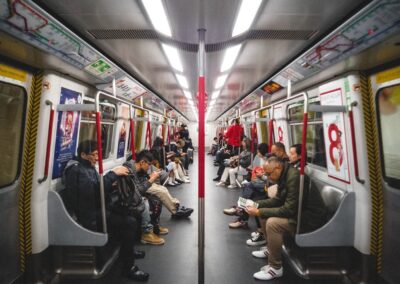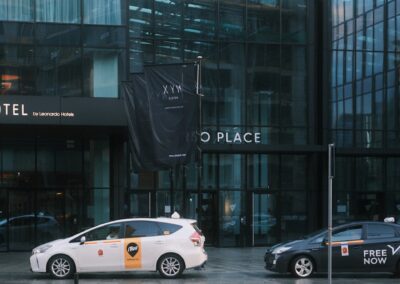Enhancing Public Transportation with IoT-Enabled Traffic Management Systems
Optimizing Traffic Flow for Public Transport
IoT-enabled traffic management systems are transforming how urban centers like Riyadh and Dubai handle transportation. These systems use a network of interconnected sensors, data analytics, and real-time monitoring to create more efficient and responsive traffic flows. The key to their success lies in the ability to prioritize public transportation, ensuring that buses and other mass transit options move smoothly through congested areas. By integrating IoT technology into traffic lights and intersections, cities can dynamically adjust signal timings, giving priority to buses during peak hours. This approach not only reduces delays for public transport users but also encourages more people to switch from private cars to mass transit, easing overall congestion.
In cities where public transportation is the backbone of urban mobility, like Riyadh and Dubai, the implementation of IoT-enabled systems is a game changer. It allows for the creation of dedicated lanes for buses, which are monitored and managed in real-time. These dedicated lanes help to minimize delays and ensure that buses can maintain consistent schedules, even during rush hours. By leveraging IoT technology, cities can monitor traffic patterns and adjust lane assignments dynamically, ensuring that public transportation remains a reliable and attractive option for commuters.
Moreover, IoT-enabled traffic management systems can be used to gather data on public transportation usage, helping city planners make informed decisions about future infrastructure investments. This data-driven approach enables the optimization of bus routes, the expansion of services to underserved areas, and the improvement of overall public transportation efficiency. As more cities in the UAE and Saudi Arabia adopt these systems, they are setting a new standard for smart city development, positioning themselves as leaders in urban innovation.
Supporting Sustainable Urban Mobility
The shift towards sustainable urban mobility is a priority for many modern cities, and IoT-enabled traffic management systems play a crucial role in this transformation. By promoting the use of public transportation and reducing reliance on private vehicles, these systems help lower carbon emissions and improve air quality. In cities like Riyadh and Dubai, where traffic congestion and pollution are growing concerns, adopting IoT technology in traffic management is an essential step towards creating more sustainable urban environments.
One of the key benefits of IoT-enabled traffic management systems is their ability to support the development of dedicated lanes for public transportation and cyclists. These lanes are crucial for encouraging the use of environmentally friendly modes of transport, such as buses, trams, and bicycles. By ensuring that these lanes are free from congestion and delays, IoT systems make it easier for people to choose sustainable transportation options. This not only reduces traffic on the roads but also contributes to a healthier, more active population.
Furthermore, the data collected by IoT-enabled systems can be used to promote cycling as a viable mode of transportation in urban areas. Cities can analyze traffic patterns and identify the most popular cycling routes, allowing them to invest in the necessary infrastructure to support this growing trend. In Riyadh and Dubai, where cycling is becoming increasingly popular, the ability to monitor and manage cycling lanes in real-time is a significant advantage. It ensures that cyclists have safe, dedicated spaces to ride, free from the dangers posed by heavy traffic.
Transforming Urban Mobility with IoT-Enabled Traffic Management Systems
Real-Time Data for Informed Decision-Making
One of the most significant advantages of IoT-enabled traffic management systems is their ability to provide real-time data to city planners and traffic authorities. This data is invaluable for making informed decisions that improve the overall efficiency of urban mobility systems. In cities like Riyadh and Dubai, where rapid growth and development have led to increased traffic congestion, the ability to respond quickly to changing traffic conditions is crucial. IoT systems offer a solution by continuously monitoring traffic flow and providing instant feedback to traffic control centers.
By utilizing this real-time data, cities can implement adaptive traffic control measures that respond to the current conditions on the ground. For example, if a major traffic jam occurs, IoT-enabled systems can automatically adjust traffic light timings, reroute vehicles, and prioritize public transportation to alleviate the congestion. This level of responsiveness is impossible with traditional traffic management systems, making IoT technology a vital component of modern urban planning.
Moreover, the insights gained from IoT data can help cities plan for the future. By analyzing trends in traffic patterns, city planners can identify areas that require infrastructure upgrades or new transportation services. This proactive approach ensures that cities can accommodate growth while minimizing the impact on traffic and the environment. As Riyadh and Dubai continue to expand, the adoption of IoT-enabled traffic management systems will be critical in maintaining the quality of life for their residents.
Enhancing Public Safety and Reducing Accidents
In addition to improving traffic flow and sustainability, IoT-enabled traffic management systems also play a crucial role in enhancing public safety. By providing real-time monitoring and data analysis, these systems can identify potential hazards on the road and alert authorities to take immediate action. In cities with heavy traffic, such as Riyadh and Dubai, this capability is essential for reducing accidents and ensuring the safety of all road users.
For instance, IoT sensors can detect when vehicles are traveling at unsafe speeds or when there is a high risk of collisions at busy intersections. The system can then trigger automated responses, such as adjusting traffic light timings or alerting drivers through digital signage. This proactive approach to traffic management not only prevents accidents but also helps to enforce traffic laws more effectively.
Furthermore, IoT-enabled systems can support emergency response efforts by providing real-time data on traffic conditions. In the event of an accident, these systems can quickly identify the best routes for emergency vehicles, ensuring that they reach the scene as quickly as possible. This capability is particularly valuable in large, fast-paced cities like Riyadh and Dubai, where rapid response times can mean the difference between life and death.
Conclusion: The Future of Urban Mobility
As cities across Saudi Arabia and the UAE continue to grow and evolve, the adoption of IoT-enabled traffic management systems will be essential for creating sustainable, efficient, and safe urban environments. These systems offer a powerful tool for optimizing traffic flow, promoting public transportation, and enhancing public safety. By leveraging the power of real-time data and advanced analytics, cities can transform their urban mobility systems and set a new standard for smart city development.
As Riyadh, Dubai, and other major urban centers embrace this technology, they are not only improving the quality of life for their residents but also positioning themselves as global leaders in smart city innovation. The future of urban mobility lies in the hands of IoT-enabled systems, and the potential benefits are vast—from reduced congestion and pollution to enhanced safety and sustainability. For business executives, mid-level managers, and entrepreneurs, understanding and investing in these technologies is key to staying ahead in a rapidly changing world.
—
#IoT #SmartCities #PublicTransport #UrbanMobility #TrafficManagement #RiyadhInnovation #DubaiSmartCity #SustainableCities













